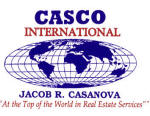|
TREC LICENSE # 0303291







 CASCO CASCO
mAIN oFFICE
210-692-0990






| | 

Monitary
| |
The devaluation of the Brazilian currency,
the Real, was the major event that colored virtually all Latin American
economic reporting in 1999. However, the real touchstone in the
discussion of any aspect of Latin American markets still remains the
Mexican economic crisis of 1994-95. Tequila Monday remains the byword
for all of the economic chaos that resulted from the sudden 35%
devaluation of the Mexican peso in late-1995, and Mexico's worst
recession in 60 years in 1995 - the country's GDP shrank 6.2% in that
turbulent year. Popular memory in Mexico and Latin America generally has
not fully recovered from this period, and neither has the Mexican real
estate market. Nonetheless, economic recovery began as early as 1996,
and though continuing shocks to the region's growth take their toll,
Mexico offers good long-term real estate investment prospects both
financially and in terms of use-value: it is costly to build in Mexico.
The strength with which Latin American
markets have rebounded from the aftereffects of Tequila Monday surprised
the American financial community in general. For example, in 1997 equity
offerings in the real estate sector grew to become a distinct subset of
their own for the first time ever within overall Latin American equity
offerings. Even the U.S. investment banks involved in the specific real
estate equity offerings expressed great surprise at the high level of
interest. Over the past 20 years, Hines (Houston), a major U.S.
developer, has remained active in the Mexican real estate market. To
date, Hines has invested US$300 million in Mexican real estate and plans
to continue investing at US$40 million per year.1
As far as other forms of foreign
investment in Mexican real estate are concerned, interest in second
home/vacation property is expected to grow. Individual foreign buyers
have greater security in property rights, although as discussed below
there remain risks and areas that need important legal and institutional
strengthening. Some areas of immediate future growth in Mexican are
logical though initially surprising. For example, one growth market in
Mexico is expected to be in senior retirement communities, including
assisted living facilities, due to the dual attractions of warm climate
and the lower costs for living and care provision. The industrial real
estate market also offers growth because existing stock in Mexico City
and Monterrey is outdated. The need for real estate infrastructure for
manufacturing, warehousing, and transportation is increasing each year
due to NAFTA-stimulated intertwining of the Mexican and U.S. economies.2
There are of course significant
marketplace differences between the United States and Mexico in both the
commercial and residential real estate sectors. One is what initially
appears the irrationally high value of land in Mexico. In fact, due in
significant measure to the high price of land, construction costs are as
high, if not higher in Mexico as in the U.S. This is counter to American
expectations for construction costs to reflect the lower costs of the
Mexican labor market. This is a good reminder that economic valuations
of any commodity or product, in any country, always contain a
significant cultural as well as psychological element. In Mexico, land
has been and remains to great extent the traditional site of investment.
By contrast, in the U.S. and Western Europe, the conversion of land
value into industrial and securities investment has been arguably the
main historical driving force of the last four centuries. Land in Mexico
therefore seems overvalued when using American valuation systems and
perspectives. Commercial real estate services are also not developed in
Mexico to American expectations. There are only some 40-50 commercial
real estate brokers in the country and they are almost all in Mexico
City. Commercial real estate in Mexico is also not a turnkey operation
as is expected in the U.S. - commentators are not joking when they write
that in Mexico the tenant leases a series of white boxes and does the
alterations themselves.3 |
COPYRIGHT© 2002 NATIONAL ASSOCIATION OF
REALTORS®
REALTOR® - A registered collective membership mark that
identifies a real estate professional who is a member of the NATIONAL
ASSOCIATION OF REALTORS® and subscribes to its strict Code of Ethics..
The National Association of REALTORS®, 430 N. Michigan
Ave., Chicago, IL 60611 Telephone: 1-800-874-6500

| |
|
 The
The
 Companies inc.
Companies inc.
![]()
